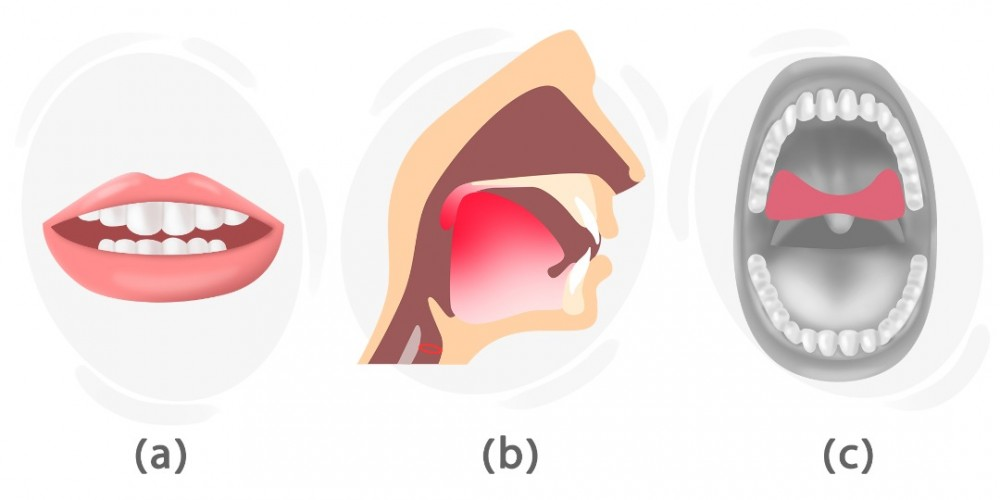How to Pronounce the /ŋ/ Sound

In this lesson, we are going to work on how we can produce the /ŋ/ sound using the proper articulatory organs.
What Type of Sound Is /ŋ/?
/ŋ/ is a consonant in the English language.
How to Produce /ŋ/?


As you can see in picture (b), the tongue and the uvula are important in the production of this sound. To produce this sound, the back of the tongue is raised and slightly makes contact with the uvula. As you can see, the uvula has not blocked the air passage into the nose. As we move our tongue upwards to stop the air from going out of the mouth, our lips and teeth part a bit. Then, as it is clear in the picture, we start vibrating our vocal cords. So, this is a nasal sound. Also, note that this sound is voiced.
If you take a look at the picture (a), you can see how the lips and the teeth, are parted. However, to produce this sound properly, you must open your mouth like you are smiling.
For more comprehension, study picture (c) carefully. There, you can see clearly where exactly you have to place the back part of your tongue. The highlighted part shows the soft palate.
Which Letters are Pronounced as /ŋ/?
The sound /ŋ/ is represented by the following letters:
ng:
ping-pong /pɪŋˌpɑːŋ/
something /sʌm.θɪŋ/
length /leŋθ/
n (only before the letter "k"):
think /θɪŋk/
sprinkle /sprɪŋ·kəl/
debunk /diːˈbʌŋk/
link /lɪŋk/
/ŋ/ Sound in the Most Common World Languages
As you can see, the /ŋ/ sound can be found in most common languages. However, Languages like Portuguese, Russian, Arabic, Italian and Turkish do not have this sound. If you use all the instructions that we have provided for you and practice a bit, you will be able to produce this sound like a native speaker in no time. Look:
Existence | Example | |
|---|---|---|
Mandarin | ✔ | 北京 (Běijīng) |
Spanish | x | - |
Hindi | ✔ | रंग |
Bengali | ✔ | রঙ |
Portuguese | x | - |
Russian | x | - |
Japanese | ✔ | りんご |
Vietnamese | ✔ | ngà |
Turkish | ✔ | yangın |
French | x | - |
German | ✔ | lang |
Italian | ✔ | anche |
Persian | ✔ | رنگ |
Standard Arabic | x | - |
Korean | ✔ | 성에 |
Indonesian | ✔ | bangun |
Filipino | ✔ | mangga |
Hungarian | ✔ | ing |
Dutch | ✔ | angst |
Polish | ✔ | bank |
Romanian | ✔ | lung |
Swedish | ✔ | ingenting |
Czech | ✔ | tank |
Greek | ✔ | άγχος |
Ukrainian | x | - |
Urdu | ✔ | رن٘گ |
Listening
Below, there is an audio file that helps you learn the proper pronunciation of the /ŋ/ sound:
Comments
(0)